 W
WThe British Schools Museum is an educational museum based in original Edwardian and Victorian school buildings in Hitchin in Hertfordshire, England. The museum complex is made up of Grade II listed school buildings housing infants, girls and boys schools with houses for Master and Mistress. It includes a monitorial schoolroom based on the educational theories of Joseph Lancaster for 300 boys, which opened in 1837, and a rare galleried classroom, dating from 1853.
 W
WThe Burston Strike School was founded as a consequence of a school strike and became the centre of the longest running strike in British history, that lasted from 1914 to 1939 in the village of Burston in Norfolk, England. Today, the building stands as a museum to the strike. Every year hundreds of people turn up for a rally to commemorate the 25-year strike over the jobs of Annie Higdon and her husband.
 W
WThe Chidōkan (致道館) was the Domain academy of Shōnai Domain under the Edo period Tokugawa shogunate located in what is now part of the city of Tsuruoka in the Tōhoku region of northern Japan. It is one of over 250 han schools which existed in Japan during the Bakumatsu period, it is one of the few to retain some of its original structures. It was designated a National Historic Site of Japan in 1951.
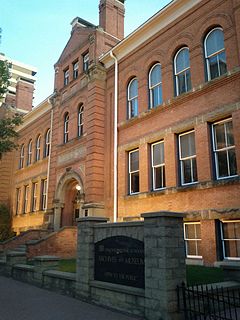 W
WMcKay Avenue School is a former school and historic site in Edmonton, Alberta, Canada. The site is a Provincial and Municipal Historic Resource, and home to the Edmonton Public School Board's archives and museum.
 W
WThe Education Museum is a museum in Melaka City, Melaka, Malaysia.
 W
WEnoch Turner Schoolhouse is a historic site and museum owned by the Ontario Heritage Trust. The school was built in 1848 when it was known as the Ward School. The building is located at 106 Trinity Street between King Street East and Eastern Avenue in Toronto, Ontario. Canada. It is the oldest school standing in the city.
 W
WThe Former Nakagomi School is a surviving Giyōfū-style building from the Meiji period located in the Nakagomi neighborhood of the city of Saku, Nagano、Japan. The building was designated a National Important Cultural Property of Japan in March 1969 and a National Historic Site of Japan in April 1969.
 W
WThe Hungerford Almshouses in Corsham, Wiltshire, England, were built in 1668 for Lady Margaret Hungerford of Corsham Court. It has been designated as a Grade I listed building.
 W
WThe Kaichi School in Matsumoto, Nagano Prefecture was one of the first schools in Japan. It opened in a temporary building in May 1873, the year after the first major education reforms were introduced by the new Ministry of Education. The school moved to new premises in April 1876. This western-style building, fused with Japanese elements, was designated an Important Cultural Property in 1961. Relocated two years later during work on the nearby Metoba River, in 1965 the old school building was turned into an education museum.
 W
WKaimei School is a school located in Seiyo, Ehime, Ehime, Japan, which was built in 1882, and is considered to be the oldest school in Shikoku. With its rare Giyōfū architectural style on kaimei school was designated as one of the important cultural properties of Japan in May 1997. Today the school is a museum where 6,000 precious documents are stored and displayed including school textbooks in the Edo period through the early Shōwa period and documents on school administration.
 W
WA Karzer was a designated lock-up or detention room to incarcerate students as a punishment, within the jurisdiction of some institutions of learning in Germany and German-language universities abroad. Karzers existed both at universities and at gymnasiums in Germany until the beginning of the 20th century. Marburg's last Karzer inmate, for example, was registered as late as 1931. Responsible for the administration of the Karzer was the so-called Pedell, or during later times Karzerwärter. While Karzer arrest was originally a severe punishment, the respect for this punishment diminished with time, particularly in the 19th century, as it became a matter of honour to have been incarcerated at least once during one's time at university. At the end of the 19th century, as the students in the cell became responsible for their own food and drink and the receiving of visitors became permitted, the "punishment" would often turn into a social occasion with excessive consumption of alcohol.
 W
WThe Matsushiro Literary and Military School was the Han school of Matsushiro Domain under the Edo period Tokugawa shogunate. It located in the Matsushiro neighborhood of the city of Nagano in the Chūbu region of Japan. Of the over 250 han schools which existed in Japan at the end of the Edo period, it is the only one to survive in almost an intact form. The school was designated a National Historic Site of Japan in 1953. 205373
 W
WThe Former Mitsuke School is a surviving Giyōfū-style Meiji period school building located in the city of Iwata, Shizuoka in the Tōkai region of Japan. The building was designated a National Historic Site of Japan in 1996.
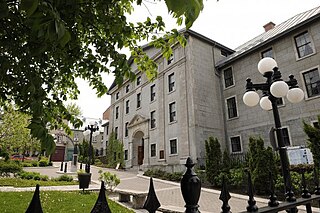 W
WThe Morrin Centre is a cultural centre in Quebec City, Quebec, Canada. It is designed to educate the public about the historic contribution and present-day culture of local English-speakers. The centre contains the private English-language library of the Literary and Historical Society of Quebec, heritage spaces for events, and interpretation services. The English-language library has been located in the Morrin Centre since 1868. The Library is the repository of the LHSQ’s collection of historical documents, including copies of the society’s journal, Transactions. These documents include original, scientific, historical, and literary articles from the nineteenth century, as well as reprints of older historical primary sources found in archives around the world. In order to access these materials, one must be a member of the library.
 W
WThe Mount Hanley Schoolhouse Museum is a community museum located in a historic one-room school in Mount Hanley, Annapolis County, Nova Scotia. The Museum focuses on the history of Mount Hanley and surrounding communities as well as rural school life and the famous mariner Joshua Slocum who attended the school in the 1850s.
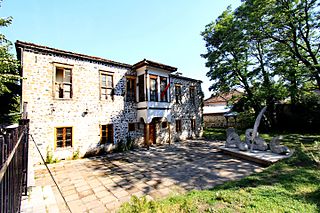 W
WThe National Museum of Education, it is a national museum located in Korçë, Albania. The museum is set up in the building where the March 7, 1887 opened the first Albanian school, otherwise known as Mësonjëtorja. It contains the history of Albanian writing and Albanian publications, such as the first Albanian alphabet written by patriot Naum Veqilharxhi and the second Albanian alphabet written by Kostandin Kristoforidhi. There are also pictures and photos of prominent patriots who contributed to the opening of the school, such as Pandeli Sotiri, Petro Nini Luarasi and Nuçi Naçi.
 W
WScotland Street School Museum is a museum of school education in Glasgow, Scotland, in the district of Kingston. It is located in a former school designed by Charles Rennie Mackintosh between 1903 and 1906. The building is one of Glasgow's foremost architectural attractions. It is located next to the Shields Road subway station.
 W
WThe Seoul Education Museum is an education museum in Seoul, South Korea.
 W
WStavanger Museum is a museum of natural and cultural history established in 1877, located in the Norwegian city Stavanger. The museum's collections consist of several departments: the department of zoology, the department for cultural history.
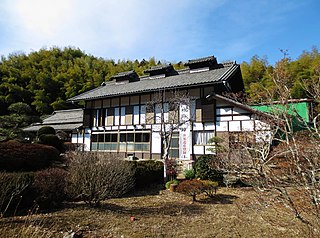 W
WThe Takayama Sericulture School , also known as the "Takayama-sha Sericulture School" or the "Takayama-sha Sericulture Improvement Society", was a school and research institute located in the city of Fujioka, Gunma. It was founded in 1884 by sericulturist Takayama Chōgorō to teach sericulture and conduct research on improvements to Japan's fledgling silk industry. The school building from 1887 was made a National Historic Site of Japan in 2009. It has been listed as a UNESCO World Heritage Site since 2014 under the overall designation of "Tomioka Silk Mill and associated sites".
 W
WToyoma Education Museum exhibits the history of education in Japan since the Meiji period. It is housed in the former Tome Elementary School Building (旧登米高等尋常小学校校舎) of 1888 in the city of Tome, Miyagi Prefecture. The U-shaped two-storey building around a courtyard, lined with balconies and with half-hexagons at the end of each wing, was designed by Kisaburo Yamazoe. It is representative of the western-inspired architecture of the Meiji period and in 1981 was designated an Important Cultural Property.
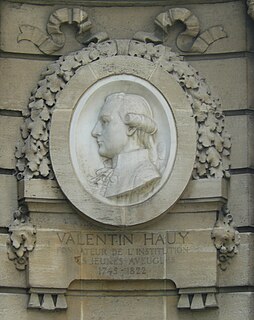 W
WThe Musée Valentin Haüy is a private museum dedicated to tools and education of the blind, and located in the building of the Valentin Haüy Association, in the 7th arrondissement of Paris at 5, rue Duroc, Paris, France. It is open Tuesday and Wednesday afternoons without charge.